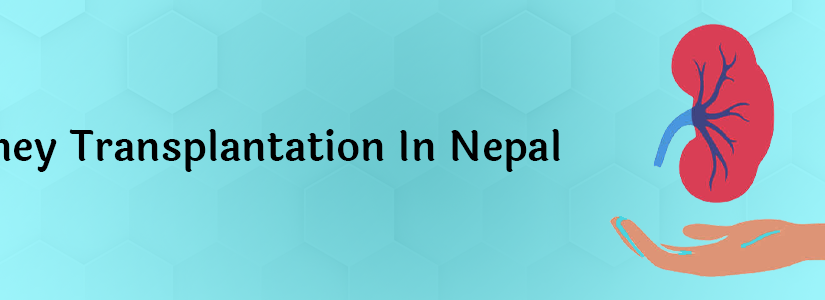CT- scan and MRI centers in Kathmandu
6 November, 2020CT- scan and MRI centers in Kathmandu...
Read More
The medical procedure, organ transplantation has been able to save lives in patients with end-stage organ failure and improve the quality of life. Organ transplantation has been done from living and brain-dead donors. The transplantation of organs like kidneys, lungs, heart, cornea, liver, and pancreas are being done. Among these, kidney transplant is very common and has shown an enormous success rate in Nepal. Every year around 3000 patients with cases of kidney failure are seen in Nepal.
Kidney failure is the stage in which the kidneys can’t function normally so can’t remove waste and extra water from the blood to keep chemical balance in the body. There are 5 stages of chronic kidney disease according to the status of kidney function, stage 5 also known as kidney failure, being the end-stage requiring dialysis or kidney transplantation. The patients of this condition have to undergo dialysis for a long time or even for the rest of their life if transplantation of kidney is not done. A transplanted kidney’s life span is 15 to 20 years on average.
The symptoms include
Decreased urine output
Swelling of legs, ankles, or feet due to fluid retention
Confusion
Nausea
Dizziness
Swollen or puffy face
Fishy breath due to ammonia intoxication
Brownish or reddish urine color
Diabetes mellitus and hypertension (high blood pressure) are well-established risk factors.
Tests to perform for screening
Urea and creatinine level in a blood sample
Albumin (protein) in urine
If the above values of the above tests are not within the normal range in the report, further investigations have to be done to rule out the causes and possible treatments.
The kidney can be donated by a living or a cadaveric donor (brainstem dead). This can be only done when the tissue of the recipient and the donor matches so that the body of the recipient doesn’t reject the donor’s kidney. According to studies performed, living donors have shown a higher success rate as well as a longer life span of the recipient. In the case of a cadaveric donor, enough health history of the donor might not be available which complicates the process of matching and transplantation.
In Nepal, the process of organ donation is regulated by Human Organ Transplantation Act 2072 and regulation 2073.
According to the new legislation, immediate relatives of the recipient can receive a kidney. The immediate relatives include husband, wife, son, daughter, father, mother, step-son, step-daughter, step-mother, step-father, adopted son, adopted daughter, adopted father, adopted mother, grandfather, grandmother, grandson, granddaughter, nephew, niece, father-in-law, mother-in-law, brother-in-law, sister-in-law, son-in-law and daughter-in-law of the recipient.
There must be at least two years of the continuous relationship prior to donation between married people and between adopted children and their respective adopted parents.
Pair exchange provisions between two or more families.
Sometimes a person close to the recipient may want to donate a kidney but their blood type is incompatible. In this case, if a recipient from one pair is compatible with the donor from the other pair and vice versa, the transplant center can arrange for two simultaneous transplants to take place. This provision allows two donors who were incompatible to give organs to the original recipient.
Procurement and transplantation of viable organs from brain-dead patients.
1. Proof of the citizenship of donor, recipient, one immediate relative of the donor, and two witnesses
2. Proof of legitimate relation of the donor, recipient, one immediate relative of the donor from one of this institution / person: Municipality, Village Development Committee (VDC), District Development Committee (DDC), Chief District Officer (CDO)
3. Two passport size photos of the donor, recipient, and two witnesses
4. Written recommendation from a certified doctor stating the need for transplantation.
The charge of kidney transplantation depends upon the hospitals where it's being done. There are few government and private hospitals performing kidney transplantation in Nepal.
Shahid Dharmabhakta National transplant Center- SDNTC (Human Organ Transplant Center- HOTC), situated at Dudhpati-17, Bhaktapur, and Tribhuvan University Teaching Hospital is the government hospital performing kidney transplants in Nepal.
KIST Medical College, Imadol has also started the renal transplant. Outside Kathmandu, the transplant is performed in the College of Medical Sciences (Purano Medical College), Chitwan.
The charges may be around NPR 400,000 to 500,000 for the transplant but depend upon the hospital and condition of the patient.
The HLA test is done before the operation alone costs about NPR 100,000.
First of all, the donor has to complete financial consultation, a psychological evaluation, and medical tests.
The donor and the recipient have to be financially stable to bear the cost of the procedure if required.
The psychological evaluation of a donor is done in order to confirm that the donor is in good mental health. This would make sure if the donor is well known about the transplantation process and the decision is fully based on him.
Medical Tests
Physical examination and screening tests are done to make sure if he/she is eligible or not to donate.
Then, blood group type and human leukocyte antigen (HLA) are tested whether they match with the recipient’s or not. Then cross-matching is done to see if the recipient’s cell attacks and destroys the donor’s cell.
Leave a comment